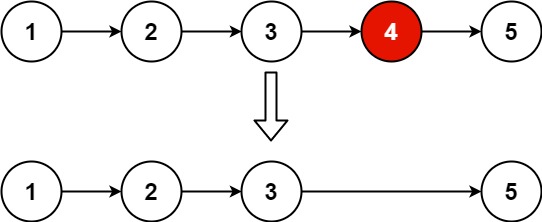19. Remove Nth Node From End of List
Given the head of a linked list, remove the nth node from the end of the list and return its head.
Example 1:

Input: head = [1,2,3,4,5], n = 2 Output: [1,2,3,5]
Example 2:
Input: head = [1], n = 1 Output: []
Example 3:
Input: head = [1,2], n = 1 Output: [1]
Constraints:
- The number of nodes in the list is
sz. 1 <= sz <= 300 <= Node.val <= 1001 <= n <= sz
Follow up: Could you do this in one pass?
Solution:
The question is not so hard. We just need to take care of some cases.
1. What if n == length of the given list?
2. If the length of LL is 1
3. What if the head is NULL.
3. What if the head is NULL.
4. General case if the Nth node is between the LL.
See the code below for better understanding.


0 Comments
If you have any doubts/suggestion/any query or want to improve this article, you can comment down below and let me know. Will reply to you soon.